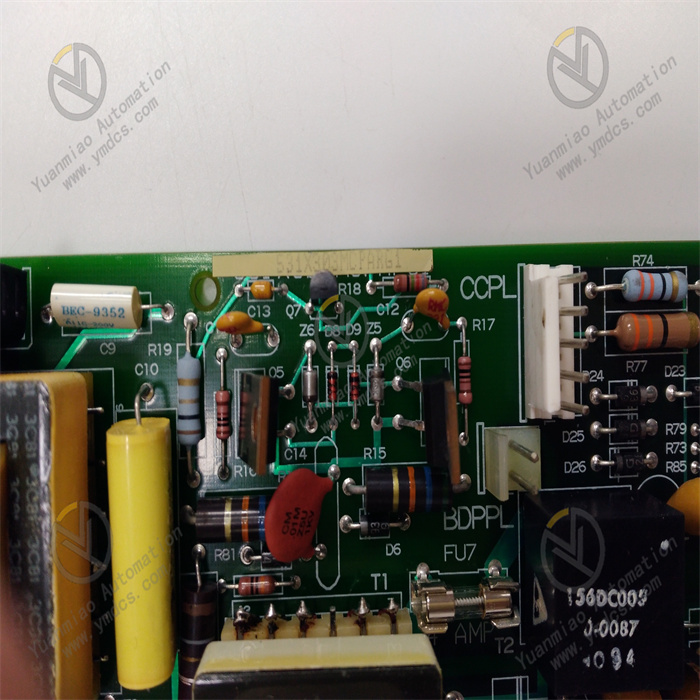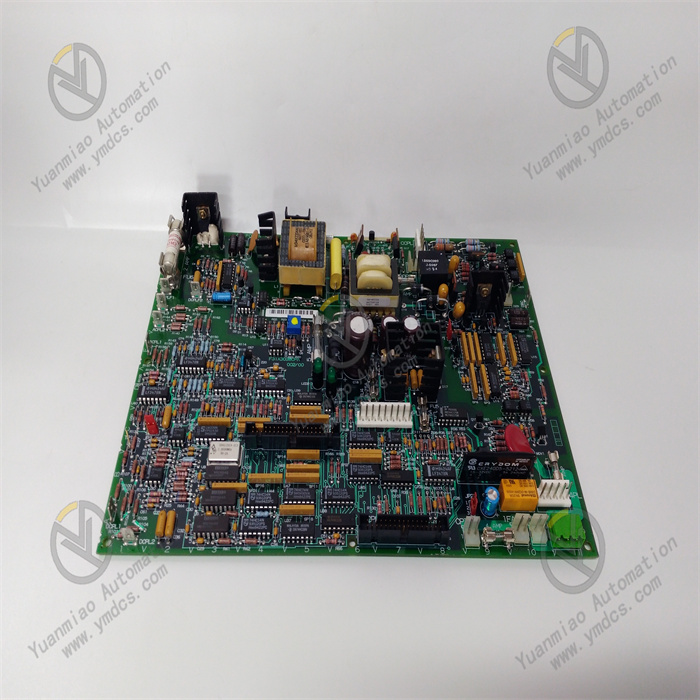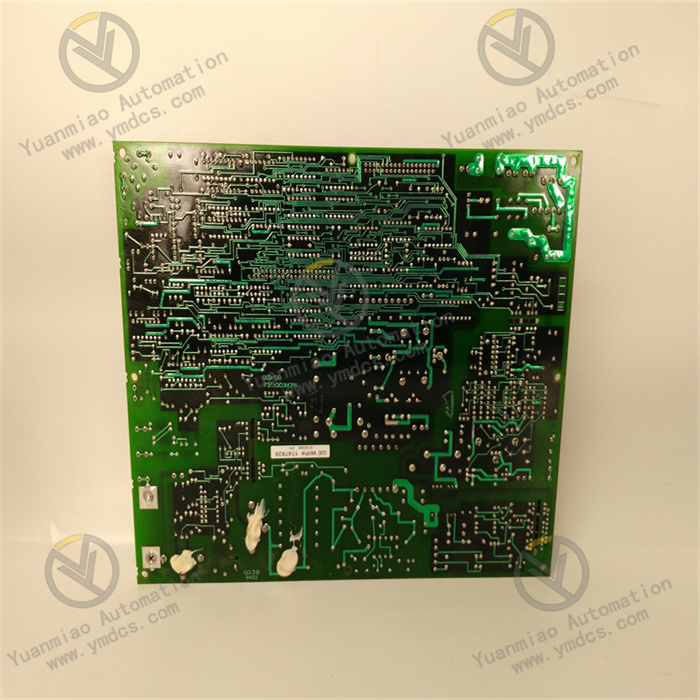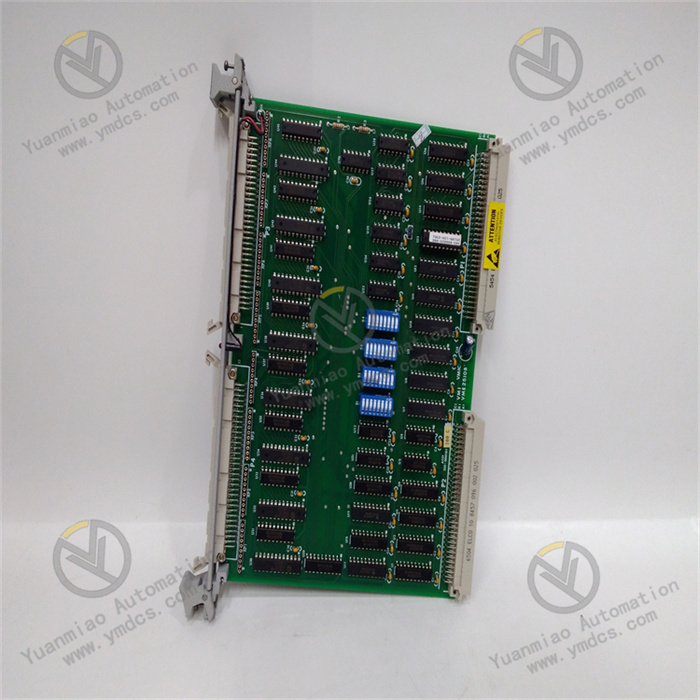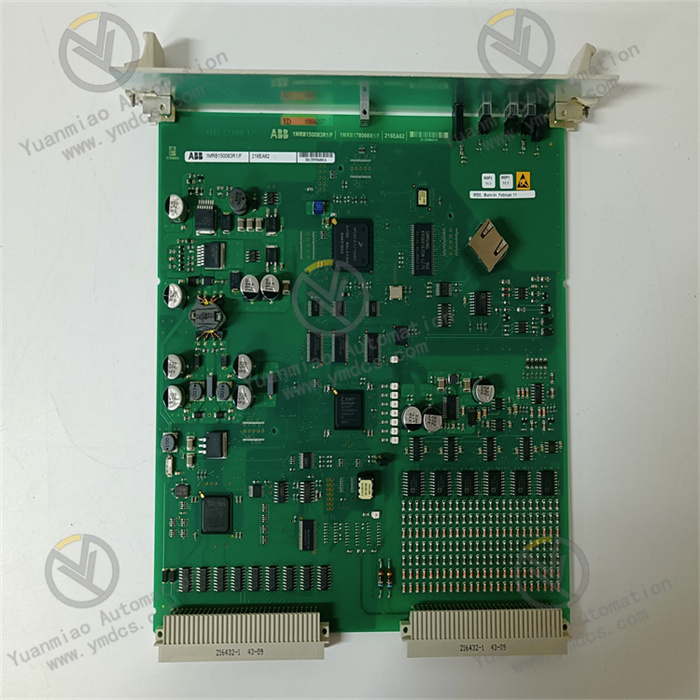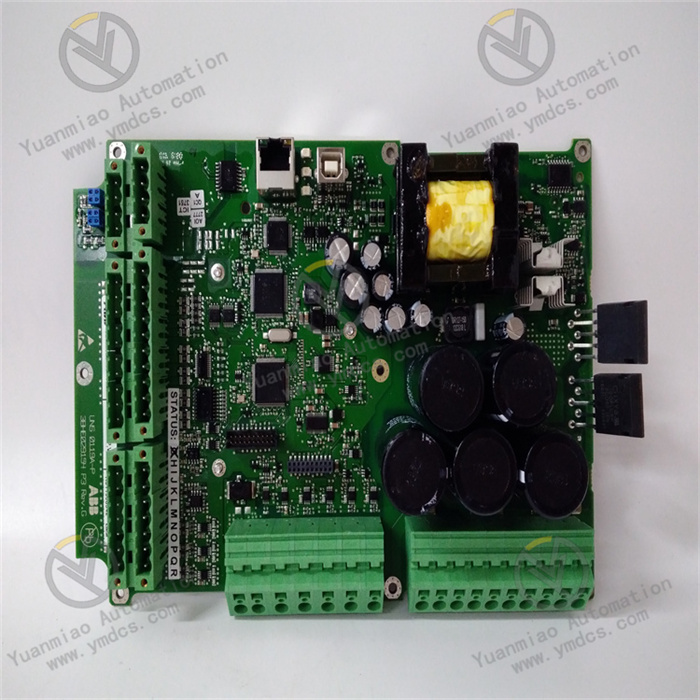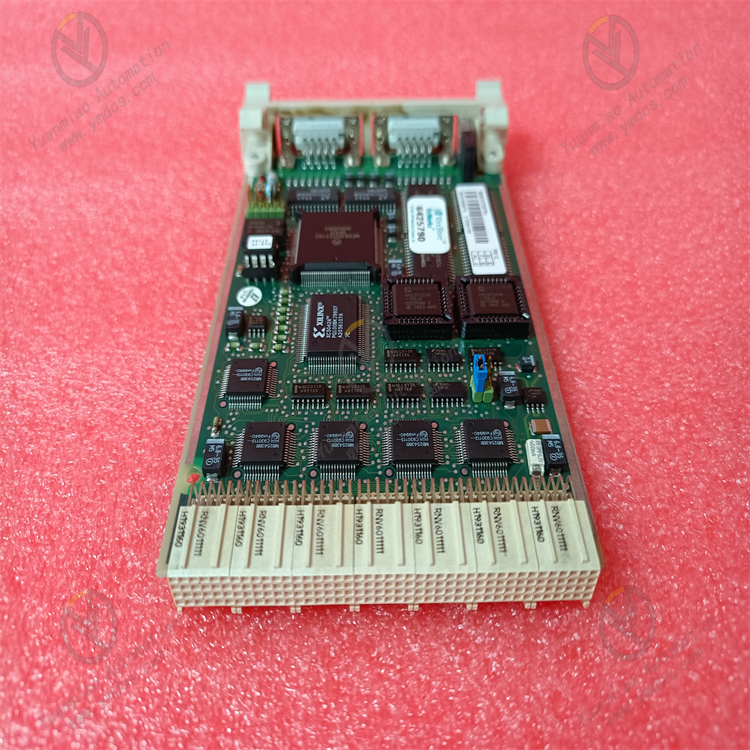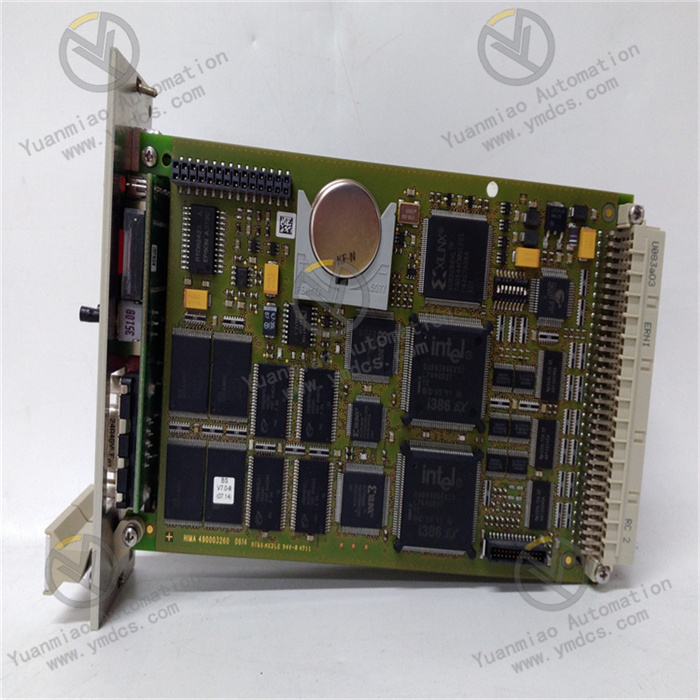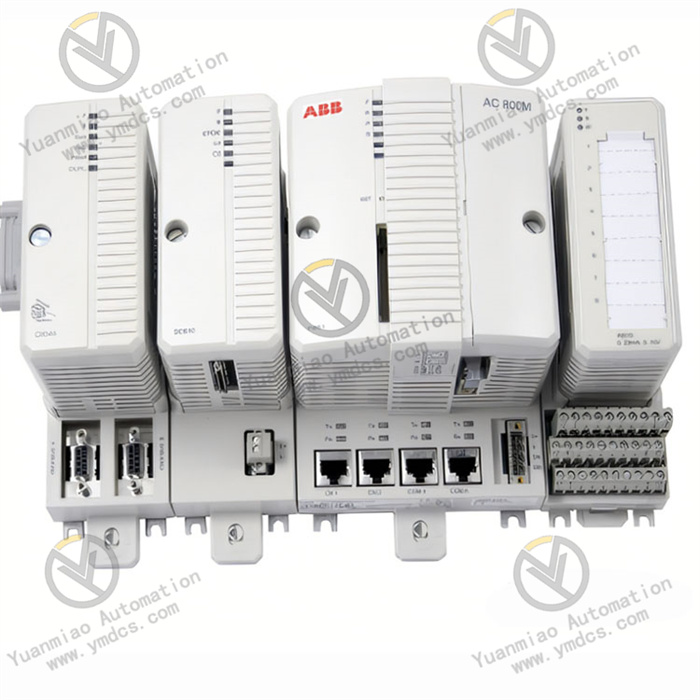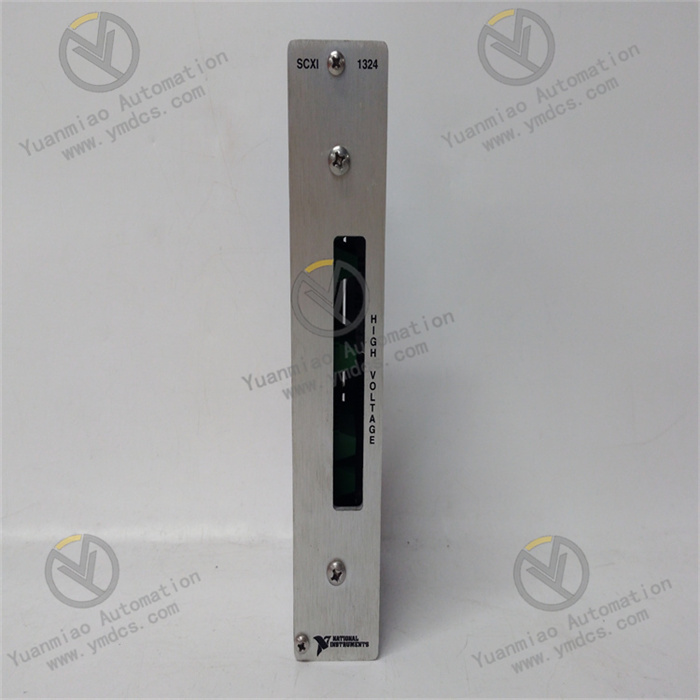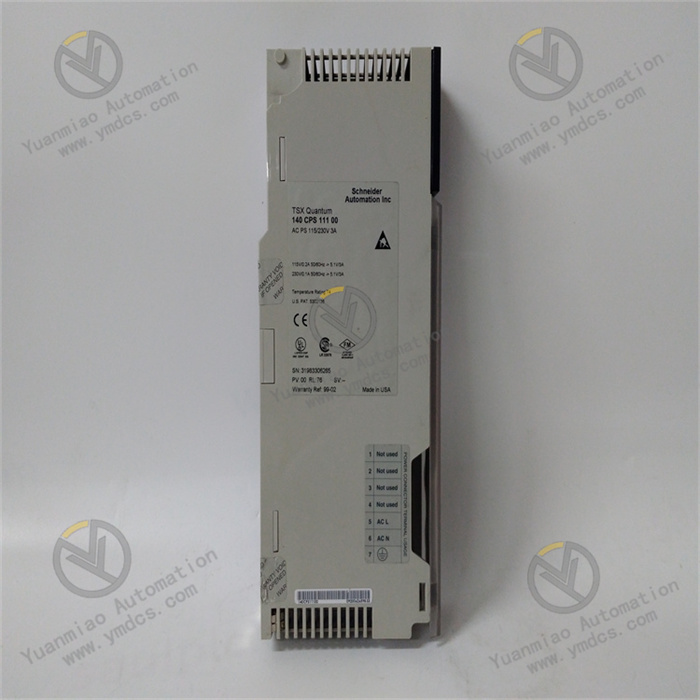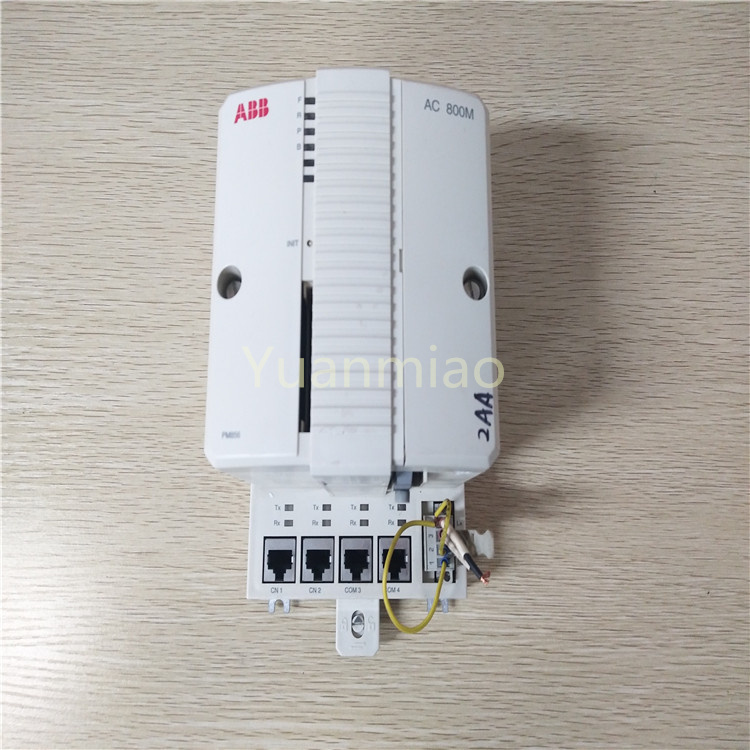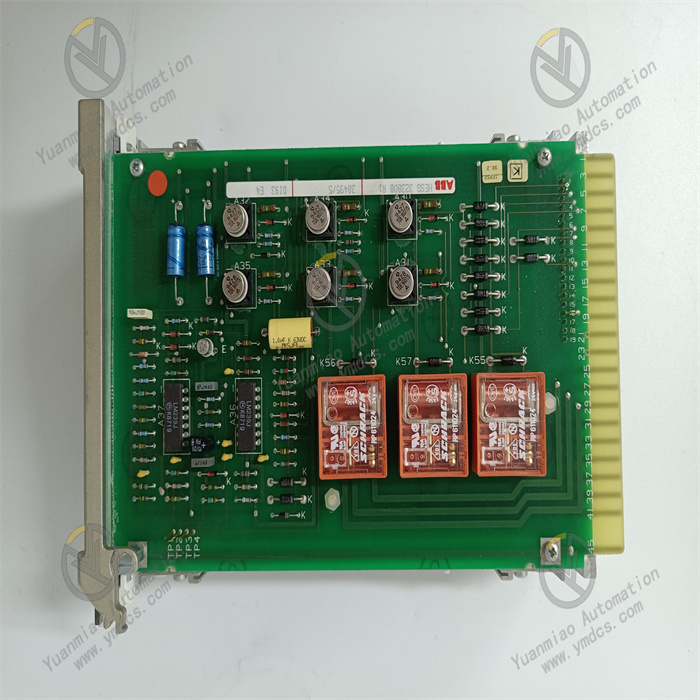Description
GE 531X303MCPARG1
I. Product Overview
The GE 531X303MCPARG1 is a logic control module that belongs to the core component family of GE industrial control systems. It is tailor-made for the control scenarios of key industrial equipment such as steam turbines, gas turbines, generator sets, and large centrifugal compressors, and is widely used in industries with strict requirements for control reliability and real-time performance, including power generation, petrochemicals, metallurgy, and energy. Its core function is to accurately receive multiple types of signals from on-site sensors, actuators, and upper-level systems, and complete signal conditioning, interlock control, fault prediction, and control command output through the built-in high-performance logic operation program. It realizes precise regulation of the operating status of industrial equipment, active safety protection, and full-link data interaction, and serves as a key core unit for building highly reliable and responsive industrial automation control systems.
This module adopts GE's standard industrial control modular architecture, featuring strong system compatibility and expandability. It can be directly and seamlessly connected to mainstream GE industrial control systems such as GE Mark VIe, Speedtronic, and GE Fanuc. It can achieve high-speed data communication with power modules, communication modules, and I/O modules in the system without additional adapter configuration. Adhering to industrial-grade high-reliability design standards, through triple electromagnetic interference suppression, wide-temperature environment adaptability optimization, and dual-redundancy logic processing design, it can stably adapt to the harsh operating environment of industrial sites with high temperature, heavy dust, strong vibration, and strong electromagnetic radiation. Relying on GE's proprietary 32-bit logic operation chip and real-time control algorithm, it ensures microsecond-level response of control commands and millimeter-level execution accuracy, providing core control support for the continuous and stable operation of key industrial equipment.
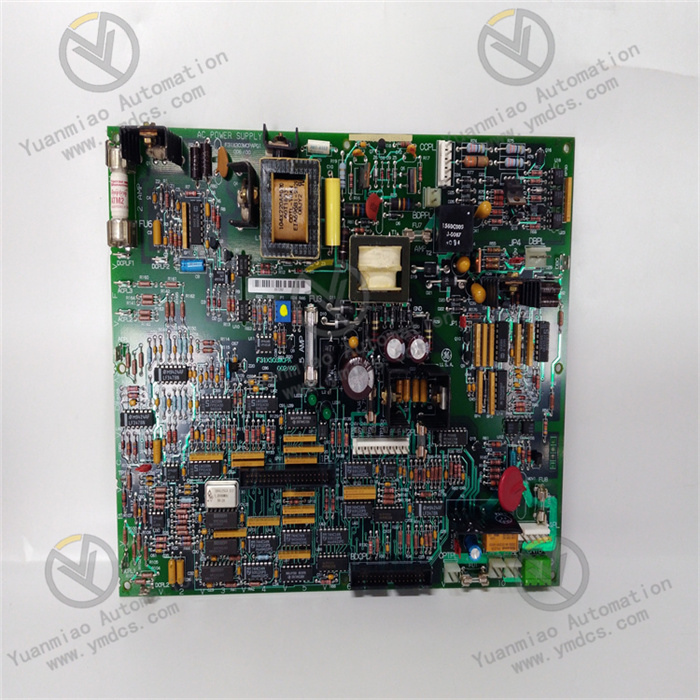
II. Technical Parameters
| Parameter Category | Parameter Name | Specific Parameters | Unit |
|---|---|---|---|
| Basic Parameters | Model Number | GE 531X303MCPARG1 | - |
| Product Type | Multi-channel High-precision Logic Control and Signal Processing Module | - | |
| System Compatibility | Mainstream GE industrial control systems such as GE Mark VIe, Speedtronic, GE Fanuc | - | |
| Compatible Rack | GE standard industrial control racks (e.g., IC697, IC698 series), occupying 1 standard control slot | - | |
| Overall Dimensions (L×W×H) | 175×110×260 | mm | |
| Installation Method | Rack slot embedded installation with mechanical latch positioning and anti-loosening buckle structure | - | |
| I/O Parameters | Digital Input Channels | 16 independent channels, supporting adaptive switching between dry contacts/wet contacts, input voltage DC 24V±10% | Channel(s) |
| Digital Output Channels | 12 independent channels, relay output (normally open/normally closed configurable), contact rating AC 250V/5A, DC 30V/5A | Channel(s) | |
| Analog Input Channels | 8 independent channels, supporting dual-mode input of 4~20mA DC/0~10V DC, input impedance ≥10kΩ | Channel(s) | |
| Analog Output Channels | 6 independent channels, output 4~20mA DC, load capacity ≤500Ω, output accuracy ±0.1% | Channel(s) | |
| Input Signal Response Time | Digital: ≤1ms, Analog: ≤3ms | ms | |
| Output Command Execution Delay | ≤2ms (from logic judgment to completion of output action) | ms | |
| Core Control Parameters | Core Processor | GE proprietary 32-bit dual-core industrial control processor, main frequency 500MHz, dual-core parallel processing | - |
| Logic Operation Capability | Supports Boolean logic, sequential logic, arithmetic operations, PID regulation, operation cycle ≤1ms | ms | |
| Program Storage Capacity | Built-in 16MB Flash memory, supporting program solidification, online modification, and breakpoint resume | MB | |
| Data Storage Capacity | 8MB RAM, capable of storing 100,000 pieces of historical data, fault records, and operation logs | MB | |
| Redundancy Support | Supports hot redundancy configuration, dual modules operating synchronously, fault switching time ≤5ms, disturbance-free switching | ms | |
| Electrical & Communication Parameters | Power Supply Voltage | Provided by system rack bus: DC 24V±10%, supporting dual-redundancy power input | V |
| Maximum Power Consumption | ≤15W (under full configuration operation, including sensor excitation output) | W | |
| Isolation Performance | Input-output: 2500VAC/1min; Input-power: 2000VAC/1min; Inter-channel: 1500VAC/1min | VAC/min | |
| Communication Interfaces | 2 RS485 (supporting Modbus RTU/ASCII protocols), 1 Ethernet (TCP/IP, supporting GE Proficy, EtherNet/IP protocols) | - | |
| Environmental Parameters | Operating Temperature Range | -20~65℃ (standard operating range); -40~70℃ (extended operating range, continuous operation ≤72 hours) | ℃ |
| Storage Temperature Range | -40~85℃, no condensation | ℃ | |
| Relative Humidity | 5%~95% (no condensation, complying with IEC 60068-2-3 standard) | % | |
| Electromagnetic Interference Resistance | Complying with IEC 61000-4 series standards, ESD ±15kV (air discharge)/±8kV (contact discharge), RF interference suppression ≥50dB, pulse burst immunity ±2kV | - |
III. Functional Features
- Compatibility with Full Range of GE Systems & Efficient Integration: The module adopts the unified hardware interface and communication protocol specifications of GE industrial control systems. It can be directly inserted into standard racks of systems such as Mark VIe and Speedtronic. After power-on, it automatically completes communication handshakes with the system controller, power module, and I/O module via the rack backplane bus, realizing "plug-and-play" rapid integration. It supports full graphical programming with configuration software such as GE Proficy iFIX and CIMPLICITY, enabling intuitive completion of logic program writing, I/O channel mapping, alarm threshold setting, and communication parameter configuration without additional development of dedicated drivers. The data interaction delay with other modules in the system is ≤1ms, ensuring real-time synchronization of control commands and monitoring data, significantly shortening the system integration and debugging cycle, and reducing integration costs.
- Multi-channel High-precision I/O Integration & Comprehensive Control Coverage: It integrates 16 digital input channels, 12 digital output channels, 8 analog input channels, and 6 analog output channels. It can simultaneously connect on-site sensor signals (e.g., temperature, pressure, vibration), actuator control signals (e.g., solenoid valves, control valves), and upper-level system command signals, realizing all-round collection of equipment operating parameters and accurate output of control commands. Digital channels support adaptive switching between dry/wet contacts without hardware jumper adjustment; analog channels are compatible with 4~20mA and 0~10V standard signals, with input accuracy up to ±0.1%, which can adapt to different types of on-site equipment without additional signal conversion modules, improving system integration and measurement accuracy.
- Dual-core Parallel Logic Operation & Accurate Rapid Response: Equipped with a GE proprietary 32-bit dual-core industrial control processor with a main frequency of 500MHz, it adopts a dual-core parallel processing architecture. The two cores are respectively responsible for signal acquisition and calculation, and control command output. The operation cycle is ≤1ms, which can quickly process multi-channel concurrent input signals and execute complex logic judgments. The response time of digital input signals is ≤1ms, the response time of analog input signals is ≤3ms, and the execution delay of output commands is ≤2ms. It can timely capture small changes in equipment operating status and output control commands, and has strong adaptability to scenarios with extremely high real-time requirements such as steam turbine speed regulation and compressor pressure closed-loop control. It supports programming of complex control strategies such as PID regulation and fuzzy control to meet the high-precision control needs of different equipment.
- Dual-redundancy Hot Standby Configuration & Safe Reliable Operation: It supports dual-module hot redundancy configuration. The main and standby modules realize real-time synchronization of input signals, operation logic, and output status through a dedicated synchronization bus, and continuously perform mutual health status checks during operation. When the main module has faults such as processor failure or I/O channel abnormality, the standby module can automatically switch to take over the control task without disturbance within ≤5ms. During the switching process, control commands are not interrupted or fluctuated, ensuring continuous and stable operation of the equipment. It is suitable for key production scenarios that do not allow shutdown, such as generator sets and large chemical reaction devices. The module has built-in fault diagnosis and fault-tolerance mechanisms, which can perform real-time monitoring of core components. When a fault is detected, it promptly triggers an alarm and initiates redundancy switching, greatly improving the operational reliability of the system.
- Multi-level Alarm & Interlock Protection & Strict Safety Shielding: It has three-level alarm (prompt, warning, danger) and interlock protection functions. Multiple fault alarm thresholds (such as over-temperature, over-pressure, over-load, and abnormal speed) can be preset according to equipment operation procedures. When the monitored parameter reaches the prompt threshold, only a pop-up prompt is displayed on the upper-level system; when it reaches the warning threshold, it triggers the flashing of the local LED indicator light and sound-light alarm on the upper-level system; when it reaches the danger threshold, it immediately outputs interlock control commands (such as emergency shutdown, feed cutoff), and at the same time locks the fault status and uploads detailed alarm information to prevent fault expansion. It supports storage and traceability of historical alarm data, which can record information such as alarm time, alarm parameter value, fault type, and processing result, with a storage capacity of 100,000 entries, providing a reliable basis for fault troubleshooting and root cause analysis. The alarm logic supports 0~20s delay anti-shake configuration, which effectively filters out false alarms caused by transient interference.
- Multi-protocol Communication Interfaces & Flexible Data Interaction: Equipped with 2 RS485 and 1 Ethernet communication interfaces, it supports mainstream industrial communication protocols such as Modbus RTU/ASCII, GE Proficy, and EtherNet/IP, enabling seamless data interaction with upper-level monitoring systems, data collectors, HMI (Human-Machine Interface), PLC (Programmable Logic Controller) and other devices. Remote monitoring and operation & maintenance can be realized through the Ethernet interface. Operation and maintenance personnel can complete module program download, parameter modification, fault diagnosis, and data backup in the central control room without on-site operations, improving operation and maintenance efficiency. It supports multi-module networking communication, which can build a distributed control system to realize collaborative control and centralized management of multiple devices in large industrial sites, adapting to the control needs of complex production processes.
- Triple Anti-interference Isolation Design & Adaptation to Harsh Environments: It adopts a triple electrical isolation design of "input-output", "input-power", and "inter-channel", with a maximum isolation voltage of 2500VAC/1min, effectively blocking the interference of on-site ground loops, power fluctuations, and equipment electromagnetic radiation on the module. It has built-in EMC (Electromagnetic Compatibility) filter circuits, surge suppression components, and electrostatic protection circuits, which can withstand ±15kV electrostatic discharge shocks and ±2kV pulse burst interference. It has passed IEC 61000-4-2/3/4/6 and other series of electromagnetic interference resistance tests, and can still operate stably in strong interference environments such as high-voltage frequency converters and high-power motors, with RF (Radio Frequency) interference suppression ≥50dB. The sensor input and output interfaces adopt a shielding design, and when used with dedicated shielded cables, the anti-interference performance can be further improved.
- Industrial-grade Reinforced Structure & Strong Environmental Adaptability: It adopts industrial-grade high-reliability components and an integrated die-cast aluminum alloy shell design. The surface of the shell is treated with anodization, which has good heat dissipation, dust-proof, and oil-proof performance. The internal heat dissipation structure is optimized, and high thermal conductivity heat dissipation fins are equipped to quickly dissipate the heat generated by core components, ensuring the module operates continuously and stably within the standard temperature range of -20~65℃. It has passed the IEC 60068-2-6 vibration test (5~150Hz, 3g acceleration) and IEC 60068-2-27 shock test (15g acceleration, 11ms duration), and can adapt to vibration during the operation of industrial equipment and shock during transportation and installation. The module has an IP20 protection rating, equipped with a dust-proof panel and waterproof aviation connectors, which can effectively block the intrusion of dust and oil in industrial sites and adapt to the harsh operating environment with heavy dust, high temperature, and strong vibration.
- Full-dimensional Self-diagnosis & Convenient Operation & Maintenance & Reduced Maintenance Costs: It supports full-dimensional self-diagnosis function, which can perform real-time monitoring of power supply voltage, processor status, memory integrity, I/O channel signals, and communication link connectivity. When a fault is diagnosed, the fault type is intuitively displayed through the LED indicator lights (power light, operation light, alarm light, fault light) on the front of the module, and fault codes (such as sensor open circuit code E01, communication fault code E06) are uploaded through the communication interface. Operation and maintenance personnel can quickly locate the fault point through the fault codes. It supports online programming and debugging. Through configuration software, real-time monitoring of the module's operating status, real-time data of I/O channels, and logic operation process can be realized, and program modification and parameter calibration can be completed without shutdown. It has built-in program and data backup functions, and backup data can be exported through the communication interface to avoid program loss and reduce maintenance costs.
IV. Working Principle
As the core logic control unit of the GE industrial control system, the GE 531X303MCPARG1 module takes "signal collection - preprocessing - logic operation - command output - alarm protection - self-diagnosis - data interaction" as its core workflow to realize precise control and safety protection of key industrial equipment. The specific working mechanism is as follows:
- Module Initialization and Configuration Loading: After the module is installed in the system rack and powered on, it automatically starts the initialization process. First, it performs a hardware self-test, sequentially checking the integrity of the connection between the processor, memory, I/O channels, communication interfaces, and the rack backplane; after passing the self-test, it establishes communication with the system controller through the high-speed internal bus of the rack, receives and loads preset configuration parameters and control programs, including I/O channel function configuration, sensor type matching, logic operation rules, alarm thresholds, communication protocols, and redundancy configuration information. After the initialization is completed, the module feeds back a "ready" signal to the controller, the operation indicator light remains on, and it enters the normal working mode; if the self-test fails or the configuration parameters fail to load, a fault alarm is triggered immediately, the fault code is uploaded, and the fault indicator light is turned on.
- Multi-type Signal Collection and Preprocessing: The module synchronously collects on-site signals through digital and analog input channels: the digital channels collect discrete signals such as solenoid valve status, limit switches, and buttons, which are isolated by a photoelectric isolation circuit and then converted into standard TTL digital level signals; the analog channels collect continuous signals such as temperature, pressure, and speed, which are amplified by an instrumentation amplifier, filtered to remove high-frequency interference by a low-pass filter circuit, and then converted into digital signals by a 16-bit high-precision AD converter. All collected signals are sent to the data buffer for temporary storage after preprocessing to ensure the integrity and stability of the signals. At the same time, external interference is blocked through the isolation circuit to protect the safety of the internal circuit of the module.
- Dual-core Parallel Logic Operation and Control Decision-making: The core processor adopts a dual-core parallel architecture. One core reads the preprocessed input signals from the data buffer and performs operation processing according to the loaded control program and logic operation rules (such as Boolean logic judgment, PID regulation calculation, sequential control logic, etc.); the other core synchronously performs operation result verification and control command generation. Based on the input signal status and preset control strategy, the processor calculates and obtains precise control commands, such as adjusting the opening of the control valve, controlling the start and stop of the motor, and switching the valve status. In the redundancy configuration mode, the main and standby modules synchronize operation data in real time through the synchronization bus to ensure the consistency of output commands, laying a foundation for disturbance-free fault switching. The intermediate data and results during the operation process are stored in the built-in RAM for subsequent calling, monitoring, and traceability.
- Control Command Output and Execution Monitoring: The core processor classifies and sends the generated control commands to the corresponding output channels: the digital output channels control the relay to pull in or disconnect through the relay drive circuit, outputting discrete control signals to actuators such as solenoid valves and contactors; the analog output channels convert the digital control signals into 4~20mA standard analog signals through a 16-bit DA converter, outputting them to executive equipment such as control valves and frequency converters. During the output process, the module performs real-time monitoring of the output signals, collects the actual output status through the feedback circuit and compares it with the command value. If a deviation is found (such as relay sticking, output short circuit), it immediately triggers a fault alarm and switches to the redundant channel (in the case of redundancy configuration) to ensure the accurate execution of control commands.


